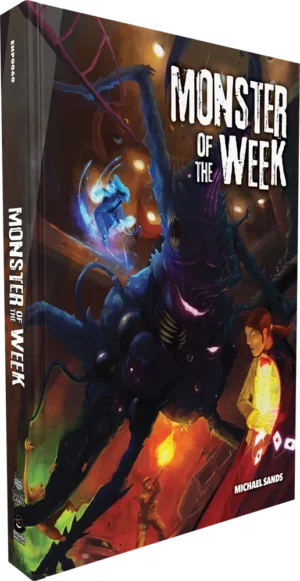Vaesen Fantasy; Gothic; Dark; Investigation; Narrative-Driven; Collaborative Worldbuilding; Low Magic
Vaesen is a Nordic horror roleplaying game set in the 19th century Mythic North, where folklore creatures known as Vaesen are real and threaten humanity. Players take on the roles of individuals with the Sight, tasked with investigating and resolving supernatural mysteries. The game uses an adapted version of the Year Zero Engine, emphasizing investigation, collaboration, and a dark, gothic atmosphere. Its unique setting and focus on mystery-solving, rather than combat, distinguish it from other RPGs, appealing to players who enjoy narrative-driven and collaborative gameplay.
Theme and Setting
Vaesen plunges players into the Mythic North, a 19th-century Scandinavia steeped in folklore and old myths. This is not the history we know. Vast forests, black lakes, and hidden groves conceal strange beings and twisted creatures, the Vaesen. While cities represent industry and enlightenment, the countryside remains tethered to old ways and ancient fears. The game's setting blends gothic horror with Nordic mythology, creating a unique and chilling atmosphere. Players must confront not only the supernatural but also the clash between tradition and modernity.
The game distinguishes itself by emphasizing atmosphere. The evocative illustrations of Johan Egerkrans play a pivotal role in conveying the setting's unique flavor, contrasting the seemingly idyllic Scandinavian world with the lurking horror beneath. The game mechanics allow for a degree of historical handwaving to maintain the desired atmosphere and experience of the period.
Core Mechanics and Rules
Vaesen utilizes an adapted version of the Year Zero Engine. Characters possess four attributes and twelve skills. To perform an action, players roll a number of six-sided dice equal to the sum of their attribute and skill. Rolling a six indicates success. Players can choose to take on Conditions (physical or mental) to re-roll failed dice, representing the strain and risk involved in investigations.
Combat is designed to be quick and impactful, using a straightforward card-based initiative system. However, brute force is rarely the solution. Many Vaesen cannot be defeated through conventional means and require research and specific rituals to banish or appease them. This encourages players to prioritize investigation and problem-solving over direct confrontation. The game de-emphasizes equipment management and emphasizes player ingenuity.
What Makes Vaesen Unique
Several factors contribute to Vaesen's unique appeal. The game's setting, blending gothic horror with Nordic folklore, is distinct. Unlike many horror RPGs, Vaesen often focuses on the human element, exploring how societal changes and human actions impact the supernatural world. The Vaesen themselves are not always malevolent, and players may find themselves mediating conflicts between humans and the mythical creatures.
The central element of the Society, the player character's organization, allows the players to rebuild their headquarters, a castle in Uppsala. This provides a sense of progression and allows players to customize their base of operations with resources, rooms, and upgrades that offer benefits during investigations. It sets up the player to be 'on the side of progress' while also understanding that this progress ruins lives and livelihoods. Ultimately, it asks whether the characters are truly on the right side.
Target Audience and Player Experience
Vaesen is targeted towards players who enjoy investigative, narrative-driven roleplaying games with a strong emphasis on atmosphere and collaborative worldbuilding. It appeals to those who appreciate the gothic horror genre and the rich tapestry of Nordic folklore. The gameâs focus on investigation and mystery-solving encourages teamwork and creative problem-solving.
The player experience is designed to be immersive and thought-provoking. Players must grapple with moral dilemmas, weigh the consequences of their actions, and consider the impact of progress on the ancient world. The game provides opportunities for players to inject their own ideas, creating a dynamic and engaging experience. The fast character creation, with pre-made archetypes and a lifepath generator, makes the game easily accessible.



